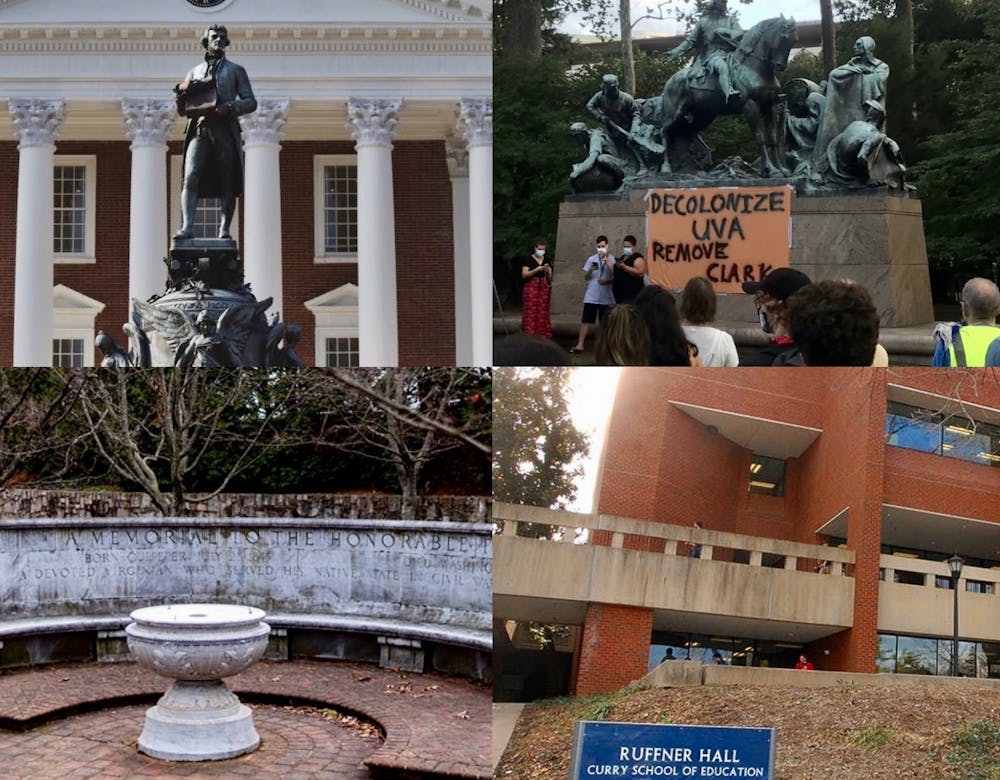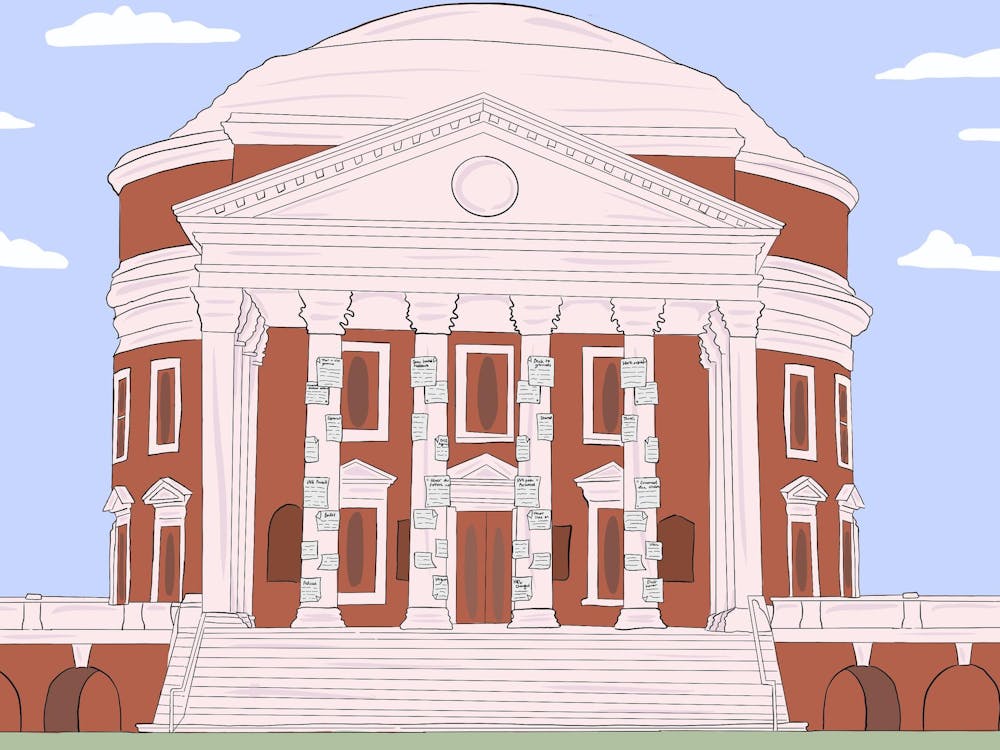The University Board of Visitors voted Sept. 11 to approve several resolutions that display a commitment to promoting racial equity on Grounds. These include renaming the Curry School of Education and Human Development, contextualizing the Thomas Jefferson statue in front of the Rotunda and removing or relocating the George Rogers Clark statue. They also voted to rededicate or remove the Frank Hume Memorial Wall — commonly referred to as the Whispering Wall — as it memorializes a Confederate soldier. Additionally, University President Jim Ryan outlined several recommendations on how the University can better address its historic landscape. These include renaming buildings “once the time period for a name expires,” ending the celebration of the Confederacy among the University’s built environment and making a full biography of previous namesakes available in the case of any name changes, which would promote learning from our history rather than erasing it.
Finally, the Board has addressed some of the demands of the student and community activists that have been calling for these changes for years. Nevertheless, the removal of statues and the renaming of buildings are not detailed policy shifts that will effectively end the history of racism at the University. Moving forward, we must hold the Board to this higher standard of committing to and fulfilling the values of accessibility and diversity on Grounds.
Perhaps the most important avenues for change lie in the Board’s endorsement of the initiatives outlined in the final report of the Racial Equity Task Force. These included dedicating financial resources to ensure the continuation of racial equity initiatives, reviewing tenure policies, providing anti-racism educational tools and committing to diversifying demographics among the student body and staff. Additionally, the report suggests the University launch an equity “scorecard” of its efforts, start an endowment for the Carter G. Woodson Institute and the Department of African American and African Studies, fund scholarships for the descendants of the enslaved laborers who built the University and create a Center for Native American and Indigenous Studies.
These 12 initiatives — should the University and its administration commit itself to instituting said changes — outline tangible efforts that can be implemented to address systematic failures in the University community. We must remember that this is only the first step. Discussing the report, Ryan stated “Some will think — and have expressed — that this report goes too far, [but] others believe it may not go far enough.” We are among those who believe that this is not enough. The University must continue to stretch further and enact meaningful changes to work towards a more equitable future for students, faculty and staff. This includes acknowledging when it is on the wrong side of history, remembering that these efforts must continuously evolve to adequately address all shortcomings. The University must recognize its history within the Charlottesville area and how it plans to improve and give back to a community it has taken so much from.
While not directly addressing any specific plans for these initiatives moving forward, Ryan did state that since each of the 12 goals align with those of the 2030 Strategic Plan, meaning any funding for these efforts will come from the Strategic Investment Fund. Nevertheless, we still do not see any of these proposals as top priorities for the University.
The University must remember that while these changes are both necessary and important, the path to a racially equitable community lies in concrete policy and continuous, vigilant practice. The final report of the Racial Equity Task Force must be more than a call to action — it must be an undertaking between the University administration and the community it serves. The University must commit to following through on the initiatives outlined in the report, continue to address problematic names and statues around Grounds and acknowledge that work is far from over. Actions speak louder than words.
The Cavalier Daily Editorial Board is composed of the Executive Editor, the Editor-in-Chief, the two Opinion Editors, their Senior Associate and an Opinion Columnist. The board can be reached at eb@cavalierdaily.com.







